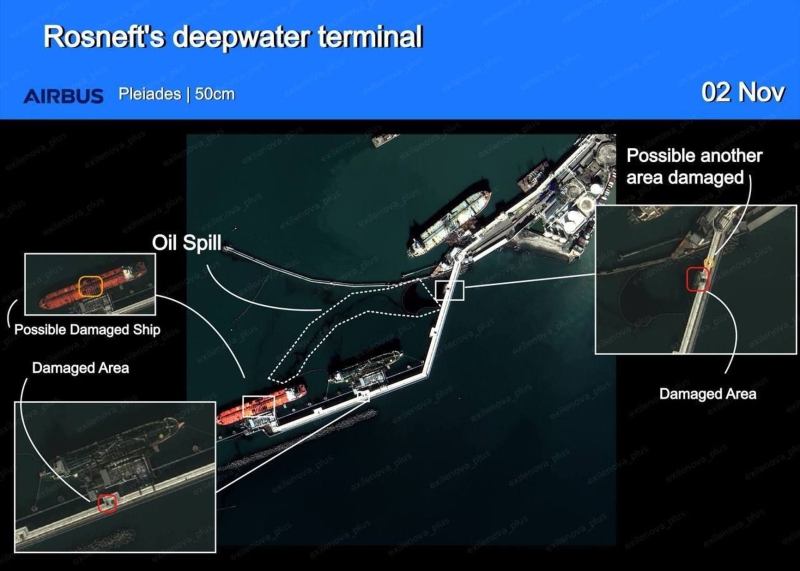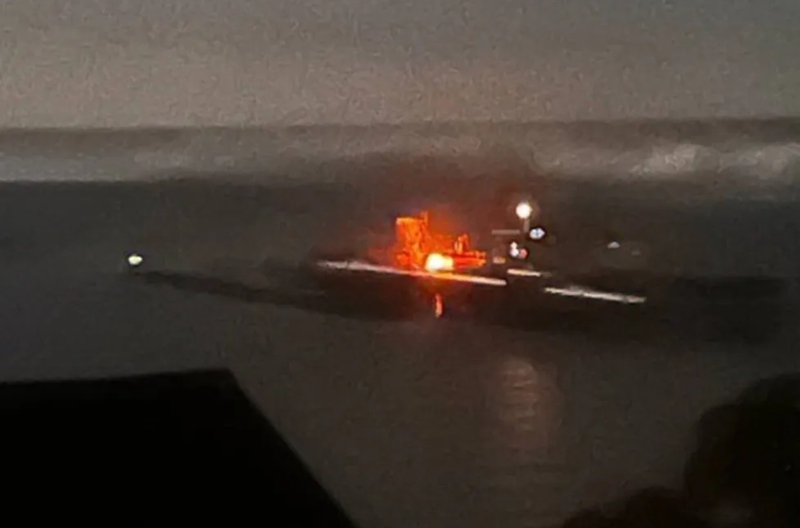Fire at an oil terminal in the southern Russian port of Tuapse, Nov. 2, 2025. Photo: Exilenova+
At least four oil tankers and a Transneft oil terminal were damaged following a drone attack on the Russian Black Sea port of Tuapse in Krasnodar Krai, according to open source intelligence (OSINT) analysts from the Telegram channels Exilenova+ and Dossier Shpiona (lit. “Dossier of a Spy”). The Insider confirmed that at least two of the affected ships belong to Russia’s so-called “shadow fleet” of tankers, which transport crude in circumvention of international sanctions.
The attack took place overnight on Nov. 2. Local authorities earlier said that “two foreign civilian vessels” had been damaged but did not name them. The Krasnodar regional crisis center added that drone debris had struck the deck superstructure of one tanker. No casualties were reported.
According to Dossier Shpiona, the damaged vessels are the POLLUX (Panama, IMO: 9243320), CHAI (Liberia, IMO: 9275402), COAST BUSTER (Bahamas, IMO: 9312913), and SATURN I (Russia, IMO: 9655470). Exilenova+ also published a satellite image showing at least two damaged pipelines at Transneft’s oil terminal, along with what appears to be fire damage on one of the tankers.

A photo from the scene shows the damaged ship believed to be the CHAI, which sails under the Liberian flag. However, the extent of the damage is difficult to assess due to poor image quality.
At least two of the listed vessels belong to Russia’s “shadow fleet,” The Insider can confirm. The SATURN I tanker was placed under UK sanctions in May 2025 for transporting Russian oil, while the POLLUX appears on Greenpeace’s unofficial list of ships operating within Russia’s “shadow fleet.”
Data from maritime tracking service Starboard Maritime Intelligence, reviewed by The Insider, shows that three of the four tankers — the exception being the SATURN I — are considered high-risk because they are over 15-20 years old. Aging vessels like these are commonly used by Moscow’s shadow fleet to bypass sanctions. Since the start of Russia’s full-scale invasion of Ukraine, European and U.S. shipowners have sold more than 200 aging tankers into this network. Lacking proper maintenance, which has become increasingly difficult to receive under sanctions, these vessels pose a serious environmental hazard.

